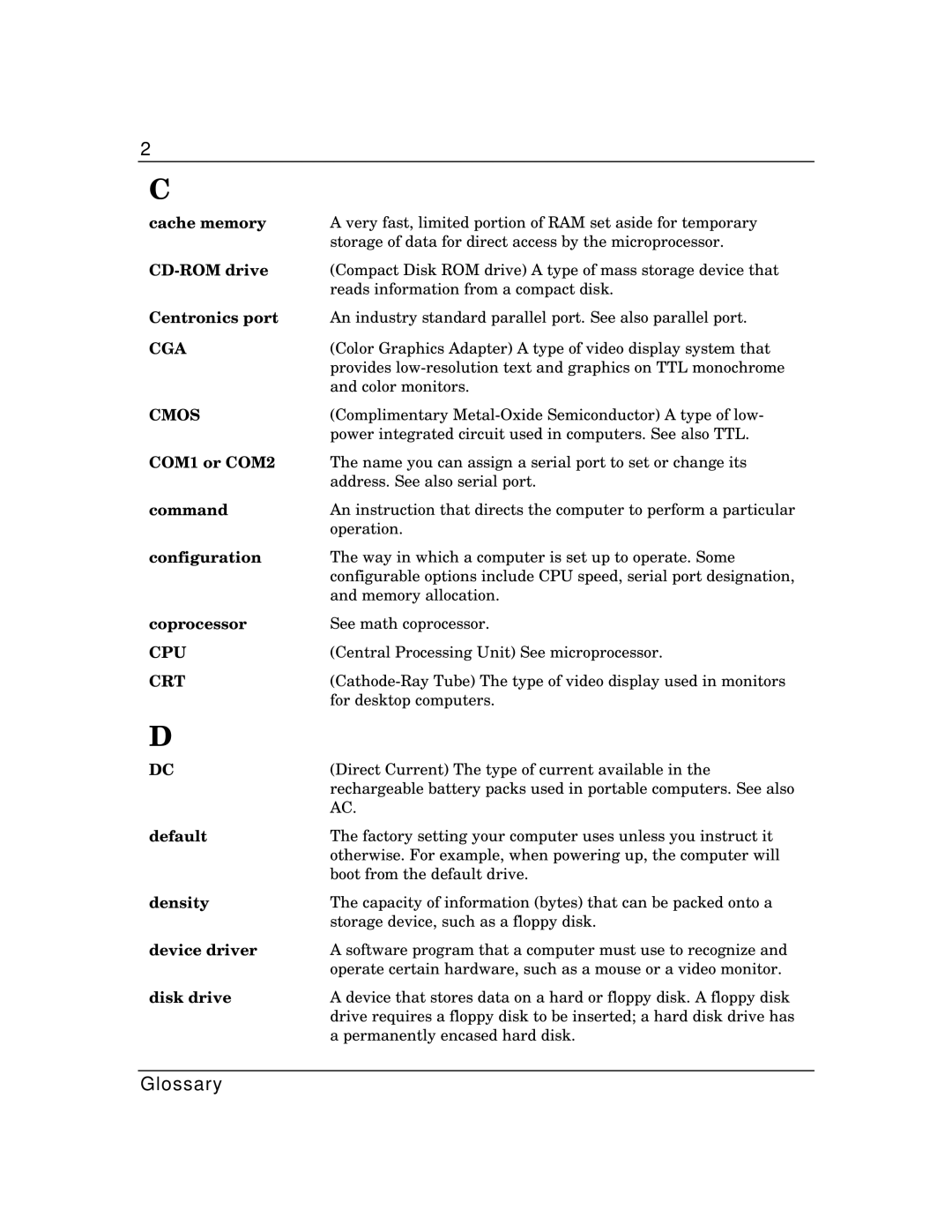
2
C
cache memory | A very fast, limited portion of RAM set aside for temporary |
| storage of data for direct access by the microprocessor. |
| (Compact Disk ROM drive) A type of mass storage device that |
| reads information from a compact disk. |
Centronics port | An industry standard parallel port. See also parallel port. |
CGA | (Color Graphics Adapter) A type of video display system that |
| provides |
| and color monitors. |
CMOS | (Complimentary |
| power integrated circuit used in computers. See also TTL. |
COM1 or COM2 | The name you can assign a serial port to set or change its |
| address. See also serial port. |
command | An instruction that directs the computer to perform a particular |
| operation. |
configuration | The way in which a computer is set up to operate. Some |
| configurable options include CPU speed, serial port designation, |
| and memory allocation. |
coprocessor | See math coprocessor. |
CPU | (Central Processing Unit) See microprocessor. |
CRT | |
| for desktop computers. |
D
DC | (Direct Current) The type of current available in the |
| rechargeable battery packs used in portable computers. See also |
| AC. |
default | The factory setting your computer uses unless you instruct it |
| otherwise. For example, when powering up, the computer will |
| boot from the default drive. |
density | The capacity of information (bytes) that can be packed onto a |
| storage device, such as a floppy disk. |
device driver | A software program that a computer must use to recognize and |
| operate certain hardware, such as a mouse or a video monitor. |
disk drive | A device that stores data on a hard or floppy disk. A floppy disk |
| drive requires a floppy disk to be inserted; a hard disk drive has |
| a permanently encased hard disk. |
